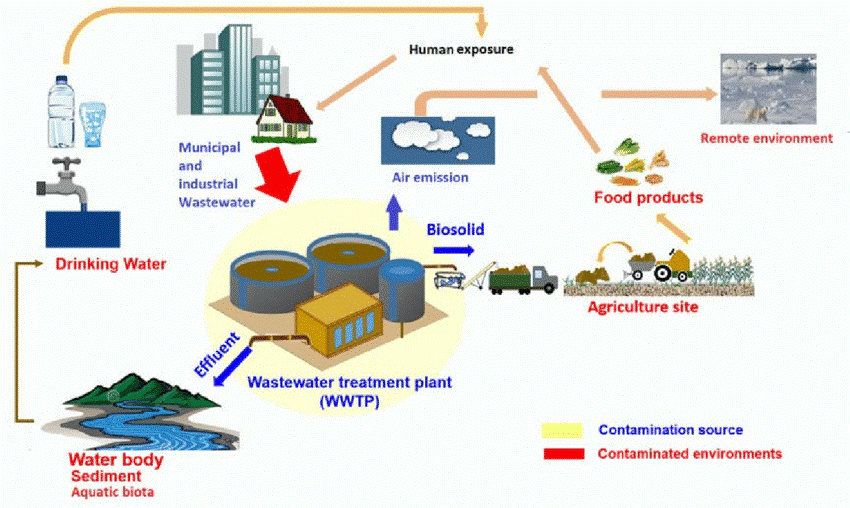PFAS Treatment in Surface Water
Wiki Article
How PFAS Treatment Makes Sure Tidy and Lasting Water
The existence of PFAS, frequently recognized as "forever chemicals," poses considerable difficulties to water high quality and public health and wellness. The ramifications of these treatments prolong beyond immediate health benefits; they raise crucial questions about long-term water management strategies that must be addressed to ensure a durable future.
Recognizing PFAS Contamination
PFAS, or per- and polyfluoroalkyl substances, have arised as a significant environmental concern as a result of their prevalent frequency and persistence in the setting. These synthetic chemicals have actually been made use of in numerous industrial applications and consumer items, including non-stick pots and pans, water-proof apparel, and food packaging, due to their distinct buildings such as water and oil resistance.The contamination of soil and water resources by PFAS occurs primarily through industrial discharges, firefighting foam usage, and leaching from landfills. pfas management. Once released, these materials are immune to degradation, causing their build-up in the atmosphere. This perseverance elevates essential concerns, as PFAS can take a trip fars away with groundwater and surface water systems, impacting drinking water supplies and communities

Wellness Dangers of PFAS
The perseverance of PFAS in the atmosphere raises substantial wellness worries for individuals revealed to these materials. Research study has connected PFAS direct exposure to various adverse health results, including immune system disorder, liver damage, and enhanced risk of particular cancers.The universality of PFAS in consumer items, such as non-stick cooking equipment, water-repellent materials, and food product packaging, additional intensifies the danger of exposure. Consuming water polluted with PFAS is a considerable concern, as these chemicals can seep right into groundwater sources. Prone populations, consisting of youngsters and those living near commercial sites, may deal with elevated risks due to their creating systems and potential for greater direct exposure levels.
As understanding of these health dangers remains to grow, regulative firms are beginning to establish standards for PFAS degrees in alcohol consumption water. Public health efforts are necessary to minimize exposure and safeguard neighborhoods from the lasting effects of these dangerous compounds.

Ingenious Treatment Technologies
Exactly how can we successfully take on the obstacles positioned by PFAS contamination in water sources? Ingenious treatment technologies are arising as important solutions in the quest for clean water. These approaches focus on the removal or devastation of per- and polyfluoroalkyl materials (PFAS), which are well-known for their persistence in the atmosphere.One encouraging technique is adsorption using sophisticated products, such as activated carbon and ion exchange resins. These products have shown effectiveness in recording PFAS particles from water. Another notable modern technology is membrane filtering, which utilizes nanofiltration and reverse osmosis to different pollutants at the molecular degree, thus giving next a barrier versus PFAS.
Additionally, progressed oxidation processes (AOPs) utilize solid oxidants to break down PFAS substances into safe byproducts. This approach is especially reliable for treating extremely infected water sources. Bioremediation strategies, using particular microbes, are also being visit checked out to degrade PFAS.
As research study proceeds, crossbreed systems that integrate numerous innovations may use enhanced performance, addressing the intricacies of PFAS contamination. The development and application of these innovative treatment technologies are necessary steps toward making sure the security and sustainability of our water sources.
Advantages of Efficient PFAS Therapy
Efficiently treating PFAS contamination in water sources dramatically boosts public health and environmental safety. PFAS, typically described as "for life chemicals," are immune to destruction and can collect in the body, resulting in severe health and wellness risks such as cancer, liver damage, and body immune system dysfunction. By applying effective therapy approaches, neighborhoods can decrease exposure to these unsafe compounds, ultimately boosting the health end results of their populations.
In addition, successful PFAS therapy contributes to the conservation of local ecological communities. Polluted water can detrimentally impact marine life and interrupt the fragile balance of regional habitats. By making sure tidy water, treatment procedures protect biodiversity and preserve eco-friendly integrity.
In addition, effective PFAS remediation can cultivate public confidence in water top quality. When communities are guaranteed that their drinking water is devoid of hazardous impurities, click over here now it promotes a feeling of safety and wellness. This trust fund is important for area engagement and support for recurring water management efforts.
Future of Water Sustainability
Amid expanding issues concerning water quality and deficiency, the future of water sustainability pivots on innovative strategies and collective initiatives. As communities deal with the impending hazards of contaminants like PFAS, the advancement of advanced therapy modern technologies is vital. These modern technologies not just concentrate on the removal of harmful compounds but likewise advertise the reuse and recycling of water, consequently lowering total need.In addition, reliable water administration plays a vital role in making sure lasting methods. Policymakers need to incorporate scientific study with regulative structures to establish clear guidelines for water use and therapy. Stakeholder interaction, including regional communities and sectors, cultivates a feeling of shared responsibility and encourages lasting methods across various fields.
Financial investment in facilities is also crucial; updating aging systems to include contemporary filtration and filtration techniques can substantially enhance water top quality. Embracing eco-friendly modern technologies, such as natural filtration systems, can supply environment-friendly solutions.
Eventually, the future of water sustainability hinges on an all natural approach that combines innovation, plan, and neighborhood involvement. By prioritizing these components, we can protect our water sources for generations to find, making certain tidy and lasting water for all.
Final Thought
In final thought, the efficient therapy of PFAS is necessary for guaranteeing clean and sustainable water. Ultimately, robust PFAS treatment strategies add to long-term strength in water monitoring, cultivating public trust fund in water top quality and advertising lasting methods.Report this wiki page